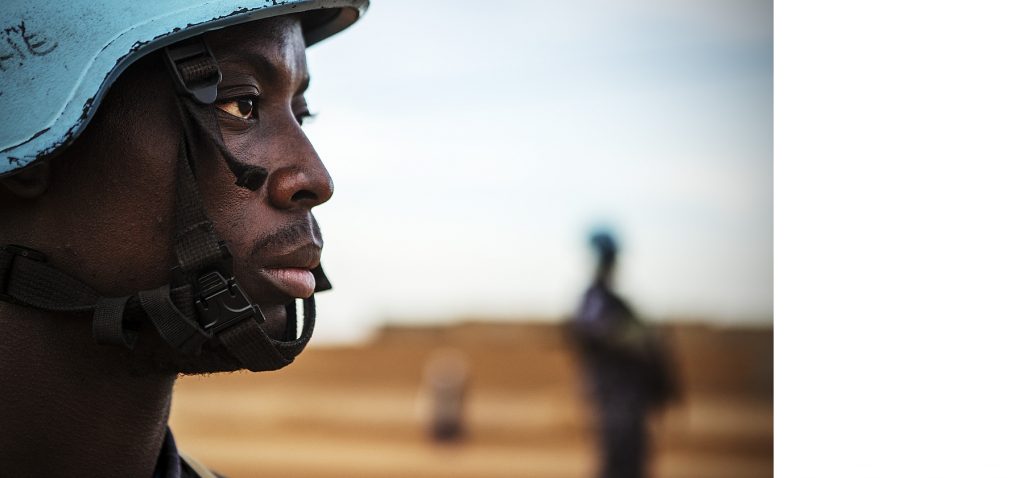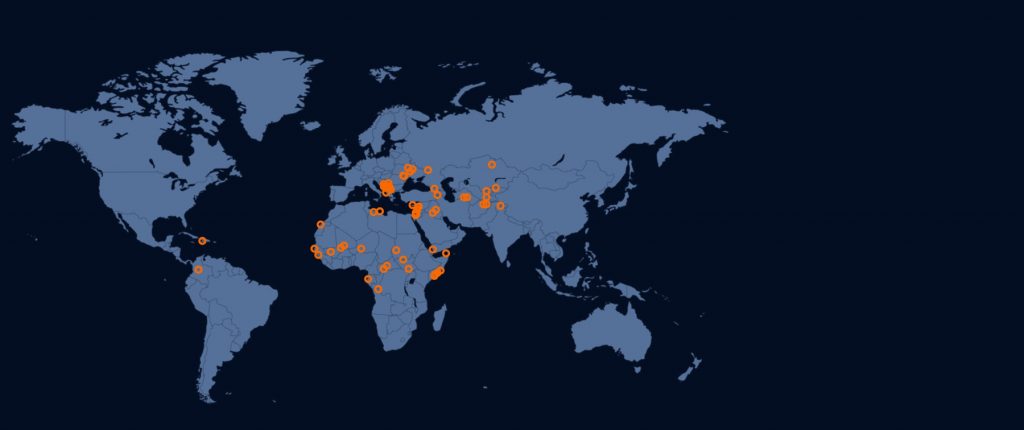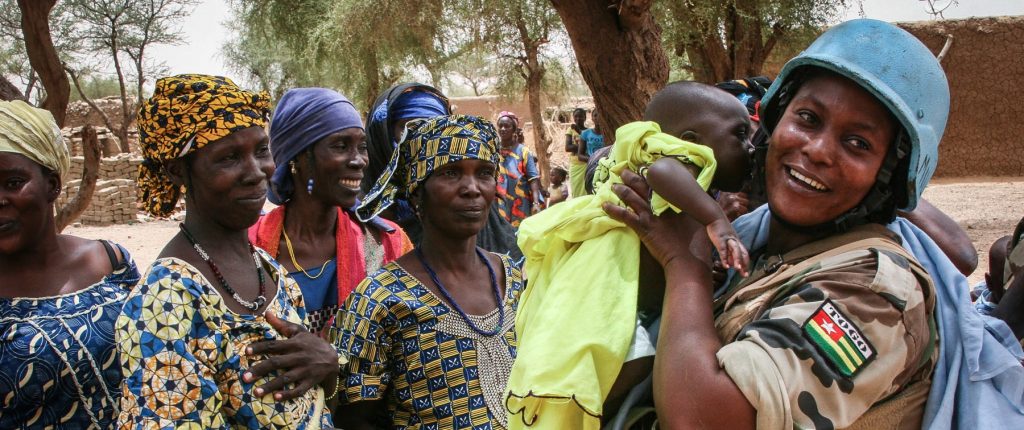UNITED NATIONS PEACE MISSIONS: MULTILATERALISM IN ACTION
THE UNITED NATIONS IS THE LARGEST PEACEKEEPING BODY IN THE WORLD. The Charter of the United Nations confers primary responsibility for preserving international peace and security on the Security Council. It is autho- rized to mandate peace missions to fulfil this re- sponsibility. These mandates are then implemented by the UN Secretariat, and troops and police personnel are provided by UN member states. PEACEKEEPING OPERATIONS ARE A HALLMARK OF THE UNITED NATIONS. In many conflict regions they are the only inter- national instrument available to protect people and take the first steps towards stability. Current- ly around 100,000 civilian and uniformed peacekeepers from 124 countries are deployed in 14 peacekeeping missions, the majority in Africa, but also in the Middle East, Haiti, Kosovo and on the border between India and Pakistan. The current annual UN budget for peace missions (July 2018 to June 2019) amounts to around 7.03 billion US dollars and is funded from mem- ber states’ obligatory contributions. Germany is the fourth-highest financial contributor. The basic principle of peacekeeping is simple: in a conflict, a non-partisan presence legitimized by the United Nations should serve – depending on the terms of its mandate – to reduce tensions, protect civilians, ensure respect for human rights, ensure the availability of humanitarian assistance and maintain peace. The international community is called upon to participate in the fulfillment of the mandate, for example by providing soldiers, police officers or high-end capabilities, or by funding peace missions. The underlying principles of peacekeeping are impartiality, non-use of force, except in self-defence and in defence of the mandate, and the consent of the parties to the conflict. PEACE MISSIONS CAN BRING STABILITY AND DE-ESCALATION AND SO CREATE SPACE AND TIME FOR POLITICAL SOLUTIONS. They cannot, however, replace those political solutions. A total of 71 peace missions have been deployed since 1948.

The first mission – the United Nations Truce Supervision Organization (UNTSO), set up to monitor the ceasefire between Israel and its Arab neighbours – received its mandate in July 1948 and is still operational today. The change in the nature of conflicts has been accompanied by changes in peace missions. MOST OF TODAY’S UN PEACE MISSIONS ARE “MULTIDIMENSIONAL” DEPLOYMENTS WITH MANY DIFFERENT MILITARY, POLICE AND CIVILIAN TASKS. Besides the UN-led peace missions (the “Blue Helmets”), the Security Council may also man- date a group of states or regional organisations (such as the African Union, the EU, NATO or the OSCE) to deploy a peace mission, or it may decide to deploy a special political mission, for example to support mediation efforts, to promote the rule of law, to verify the implementation of peace agreements or to perform other duties, such as monitoring the human rights situation.

#Action4Peacekeeping

The UN Secretariat is responsible for the organizational implementation and coordination of UN peace missions. Secretary-General António Guterres has initiated comprehensive reforms of the United Nations since taking office at the start of 2017, and these are now being implemented. THEY ARE FOCUSED ON THE IDEAL OF “SUSTAINING PEACE”.
In September 2018, in the framework of the Action for Peacekeeping (A4P) initiative, a Declaration of Shared Commitments on Peacekeeping Operations was adopted by 150 states; the purpose of these commitments is to focus peacekeeping more effectively and efficiently on the requirements of contemporary conflict settlement. Germany will continue to push for the further development of peacekeeping and the imple- mentation of the A4P agenda. In Security Council deliberations on peace missions, the Federal Government will press for effective mandates.
ONE CORE REQUIREMENT IS A COMPREHENSIVE UNDERSTANDING OF CONFLICT; consideration must be given from the outset to stabilization and peacebuilding so as to preempt any relapse into conflict. To this end the Securi- ty Council and the United Nations as a whole must also focus more sharply on structural causes of conflict and conflict catalysts, such as climate change, human rights violations and pandemics like COVID-19.

CHARTER OF THE UNITED NATIONS:
ARTICLE 1
THE PURPOSES OF THE UNITED NATIONS ARE:
1. To maintain international peace and security, and to that end: to take effective collective measures for the prevention and removal of threats to the peace, and for the suppression of acts of aggression or other breaches of the peace, and to bring about by peaceful means, and in conformity with the principles of justice and international law, adjustment or settlement of international disputes or situations which might lead to a breach of the peace.

